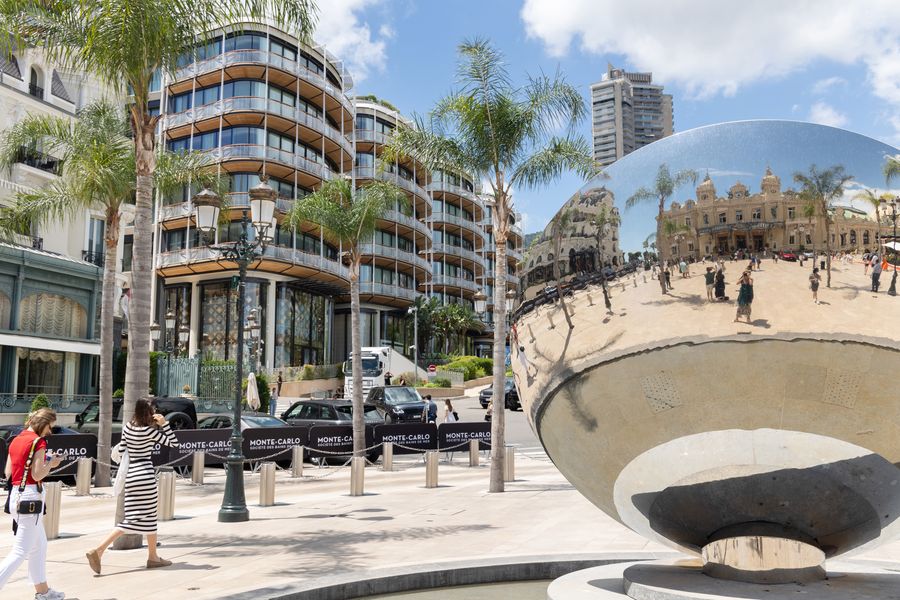Credit Card, PayPal or Cash App? How You Pay Matters
A guide to weighing security, convenience and benefits of each payment option
Buyers have more ways to pay for things than ever before: Apple Pay, Venmo, credit cards and dozens of other options. What you choose might matter as much as the purchase itself.
Each of the different payment methods provides various conveniences, perks and protections from fraud. Credit cards have long been the default option of choice. But higher interest rates have now raised the cost of carrying a credit-card balance.
Money-transfer apps such as Venmo and Zelle processed nearly $900 billion last year, and the Consumer Financial Protection Bureau expects that number to reach $1.6 trillion by 2027.
These apps and services provide easy instant payments, usually for free. The downside is that these options offer fewer protections from scams and unfulfilled orders.
“The U.S. consumer is very driven by convenience. They may not be directly driven by security,” said James Anderson, managing director at Paze, a bank-owned digital wallet.
Payment apps are among the fastest-growing sources of fraud reports and losses, according to Federal Trade Commission data. Overall fraud losses have increased more than fivefold to $1.2 trillion since 2019. Losses tied to payment apps jumped from $5 million to $47 million over the same period, according to the FTC data.
As new payment options gain acceptance, consumers should try to educate themselves how to use these methods safely, said Seth Ruden, director of global advisory at BioCatch, a fraud-detection software company.
“The channel itself is not the villain. The bad actors are the scammers, the social engineers and exploit artists,” he said.
Here’s how to weigh the security, convenience and benefits of each payment option:
Credit and debit cards
When you swipe or tap your card or authorise a card transaction online, the merchant’s bank communicates with your bank through a card network such as Mastercard or Visa to ask permission to withdraw a certain amount. Your bank then decides whether to approve the transaction based on your available funds or credit and the likelihood the transaction is fraudulent. If approved, your bank puts a hold on the funds until they are sent to the merchant’s account, usually within a business day.
Credit cards can be the most rewarding way to pay online. Card issuers use the revenue from transaction fees to fund perks for customers such as cash-back deals, travel points, access to airport lounges and fraud protection.
A credit card can be expensive if you don’t pay your balance in full, and higher interest rates have now raised the cost of carrying a credit-card balance. Paying off a $1,000 balance in 12 months at the current average annual percentage rate of 22.16% means $103 in interest, compared with $77 roughly a year ago when the average was 16.65%, according to estimates from the Federal Reserve.
Debit cards don’t offer the same rewards as credit cards since their issuers make less money from each transaction. They do come with similar fraud and payment protections as credit cards.
Federal regulations require issuers to reimburse customers for unauthorised transactions of more than $50 and allow customers to dispute charges within 30 days. Many credit cards also provide purchase protection, meaning you can ask for reimbursements directly from your issuer if something you buy is lost, damaged or inconsistent with what was advertised.
Few people make the most of their credit-card benefits, payments experts said. After finding most people don’t bother to read the fine print when they sign up for a new card, Mastercard is now notifying customers of benefits in real-time.
“If I have to read a big booklet or call a number to understand what my benefits are, I’m not doing it,” said Chiro Aikat, executive vice president of U.S. market development at Mastercard.
Digital wallets
Digital wallets such as PayPal or Apple Pay are among the safest and easiest ways to pay online. Checking out with a wallet is typically faster than paying with a credit card directly since one doesn’t have to re-enter billing information and shipping address.
All of the protections and benefits associated with the underlying card are still in effect for wallet transactions, so it is best to connect these wallets to a credit card directly to maximise your protection, said Corie Wagner, an analyst at Security.org, a safety-product review site.
If a digital wallet gives you the option to link a bank account directly, you should read the policy agreement to make sure you understand what is protected. For example, PayPal offers an extra level of purchase protection, but Apple Pay and Google Pay don’t.
Wallets also offer additional layers of security through encryption and biometric verification and many don’t share sensitive financial data such as your 16-card number with individual merchants. “Use as many authentication factors as possible” such as Face ID or personal identification numbers, Wagner said.
Peer-to-peer payment apps
Apps such as Venmo, Cash App and Zelle were designed to help people send money to friends and family, but they are now used in more settings. They move money more quickly than card payments because, instead of waiting on banks to approve the transaction, the payment is authorised once the sender hits submit. It is almost impossible to get money back once it has been sent.
These payment methods aren’t regulated as heavily as cards, so users might still be on the hook for unauthorised payments if a swindler gets control of their accounts.
“Use it to pay people you know, and trust,” said Meghan Fintland, a Zelle spokeswoman. “They’re not meant to have the credit-card security.”
Bank transfers
Businesses are increasingly offering ways to pay with your bank account directly since Automated Clearing House, or ACH, transfers are much cheaper to process than cards. This option should only be considered in exchange for a discount, payments executives said.
Consumers should be selective in sharing their bank information with merchants since wire transfers don’t have the same protection guarantees as cards.
If a business requests a direct bank transfer instead of a card payment, choosing a slower option over the newer instant methods such as Zelle might be best. ACH transfers typically take a few days to settle, giving you a few more days to try to stop the transaction before the money leaves your account.
“The slower it is, the greater likelihood is that you’ll be able to get recourse,” Ruden, at BioCatch, said.
 Copyright 2020, Dow Jones & Company, Inc. All Rights Reserved Worldwide. LEARN MORE
Copyright 2020, Dow Jones & Company, Inc. All Rights Reserved Worldwide. LEARN MORE
This stylish family home combines a classic palette and finishes with a flexible floorplan
Just 55 minutes from Sydney, make this your creative getaway located in the majestic Hawkesbury region.
Continued stagflation and cost of living pressures are causing couples to think twice about starting a family, new data has revealed, with long term impacts expected
Australia is in the midst of a ‘baby recession’ with preliminary estimates showing the number of births in 2023 fell by more than four percent to the lowest level since 2006, according to KPMG. The consultancy firm says this reflects the impact of cost-of-living pressures on the feasibility of younger Australians starting a family.
KPMG estimates that 289,100 babies were born in 2023. This compares to 300,684 babies in 2022 and 309,996 in 2021, according to the Australian Bureau of Statistics (ABS). KPMG urban economist Terry Rawnsley said weak economic growth often leads to a reduced number of births. In 2023, ABS data shows gross domestic product (GDP) fell to 1.5 percent. Despite the population growing by 2.5 percent in 2023, GDP on a per capita basis went into negative territory, down one percent over the 12 months.
“Birth rates provide insight into long-term population growth as well as the current confidence of Australian families,” said Mr Rawnsley. “We haven’t seen such a sharp drop in births in Australia since the period of economic stagflation in the 1970s, which coincided with the initial widespread adoption of the contraceptive pill.”
Mr Rawnsley said many Australian couples delayed starting a family while the pandemic played out in 2020. The number of births fell from 305,832 in 2019 to 294,369 in 2020. Then in 2021, strong employment and vast amounts of stimulus money, along with high household savings due to lockdowns, gave couples better financial means to have a baby. This led to a rebound in births.
However, the re-opening of the global economy in 2022 led to soaring inflation. By the start of 2023, the Australian consumer price index (CPI) had risen to its highest level since 1990 at 7.8 percent per annum. By that stage, the Reserve Bank had already commenced an aggressive rate-hiking strategy to fight inflation and had raised the cash rate every month between May and December 2022.
Five more rate hikes during 2023 put further pressure on couples with mortgages and put the brakes on family formation. “This combination of the pandemic and rapid economic changes explains the spike and subsequent sharp decline in birth rates we have observed over the past four years,” Mr Rawnsley said.
The impact of high costs of living on couples’ decision to have a baby is highlighted in births data for the capital cities. KPMG estimates there were 60,860 births in Sydney in 2023, down 8.6 percent from 2019. There were 56,270 births in Melbourne, down 7.3 percent. In Perth, there were 25,020 births, down 6 percent, while in Brisbane there were 30,250 births, down 4.3 percent. Canberra was the only capital city where there was no fall in the number of births in 2023 compared to 2019.
“CPI growth in Canberra has been slightly subdued compared to that in other major cities, and the economic outlook has remained strong,” Mr Rawnsley said. “This means families have not been hurting as much as those in other capital cities, and in turn, we’ve seen a stabilisation of births in the ACT.”
This stylish family home combines a classic palette and finishes with a flexible floorplan
Just 55 minutes from Sydney, make this your creative getaway located in the majestic Hawkesbury region.






















